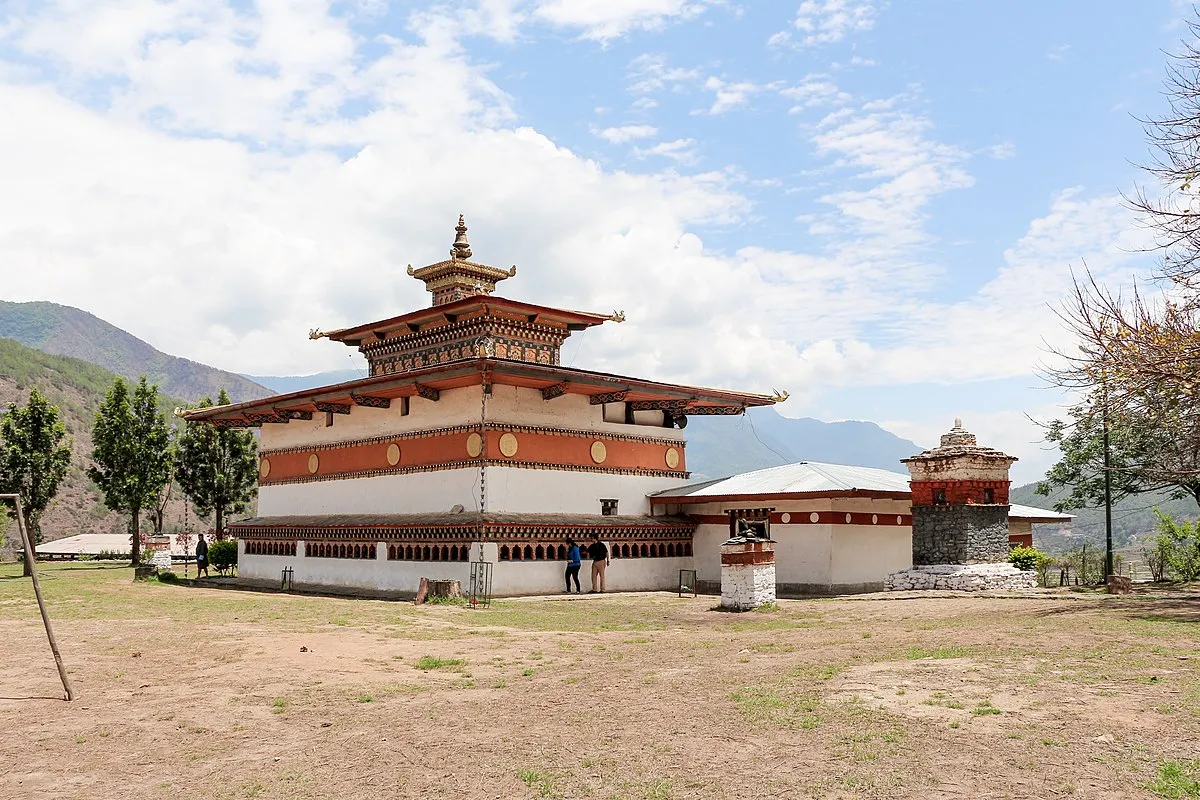1. Overview
Gangtey Valley, also known as Phobjikha Valley, is a stunning glacial valley located in central Bhutan. The valley is known for its breathtaking scenery, with expansive wetlands, rolling hills, and traditional Bhutanese villages. Situated at an elevation of around 2,800 meters (9,186 feet), it is a popular destination for nature lovers, trekkers, and birdwatchers. The valley is also home to the Gangtey Monastery, an important religious site for the Nyingma school of Buddhism. The valley is especially famous for being the winter habitat of the endangered black-necked cranes.
Location – Google Maps Link
2. History
- Gangtey Valley is located in the Wangdue Phodrang District of Bhutan.
- The valley is named after Gangtey Monastery, which is a major religious site.
- It is known for being the winter habitat of the black-necked crane, a species listed as vulnerable.
- The valley is home to several traditional Bhutanese villages that still maintain their unique way of life.
- Gangtey Valley has been designated as a conservation area to protect the black-necked cranes and their habitat.
- The Gangtey Monastery, located on a hilltop, is a center for the Nyingma school of Buddhism.
- The valley’s landscape is shaped by a large glacial plateau surrounded by mountains.
- Gangtey Valley is known for its seasonal beauty, particularly in the spring and autumn months.
- The valley offers excellent opportunities for birdwatching, especially during the black-necked crane migration.
- Phobjikha Nature Trail provides a scenic hiking route around the valley, passing through forests and traditional villages.
3. What Makes Gangtey Valley Popular?
Gangtey Valley is popular for its stunning natural beauty, tranquil environment, and significance as a black-necked crane sanctuary. The valley is a haven for birdwatchers, trekkers, and nature enthusiasts. Its serene landscape of wetlands, forests, and traditional Bhutanese villages offers an authentic Bhutanese experience. The valley is also culturally rich, with the Gangtey Monastery standing as an important spiritual center in the region.
4. Overall Ratings (1 to 5 Stars)
Overall Rating: ⭐⭐⭐⭐⭐ (5/5)
Scenic Beauty: ⭐⭐⭐⭐⭐ (5/5)
Cultural Significance: ⭐⭐⭐⭐⭐ (5/5)
Wildlife Experience: ⭐⭐⭐⭐⭐ (5/5)
Accessibility: ⭐⭐⭐⭐☆ (4/5)
5. Weather
Best Time to Visit: March to May and September to November
Temperature Range: 5°C to 20°C
These months offer mild temperatures and clear skies, perfect for hiking, birdwatching, and exploring the valley.
6. Nearest Five Hotels
- Gangtey Goenpa Lodge – A luxurious lodge offering stunning views of the valley and Gangtey Monastery.
- Phobjikha Valley Resort – A boutique hotel located amidst nature with cozy rooms and a tranquil atmosphere.
- Hotel Pema Karpo – An affordable hotel with scenic views of the valley.
- Zhiwa Ling Hotel – A luxury hotel known for its traditional Bhutanese design and peaceful environment.
- Punakha River Lodge – Located near the Punakha Valley, offering a peaceful escape with modern amenities.
7. Timings
Open: All year round
Best Time to Visit: Spring (March–May) and Autumn (September–November)
Note: The valley is accessible year-round, but the best wildlife and birdwatching experiences occur during the winter migration season (October–March).
8. Time Required to Visit
Visit Duration: 2 to 3 hours
If you are a birdwatching enthusiast or looking to explore the monastery, a full day could be spent in the valley.
9. Entry Fees & Ticket Booking Details
Entry Fee: Free
Booking: No booking required to visit the valley, though guided tours may be available for a fee to explore the valley and Gangtey Monastery.
10. Things to See & Do
- Explore the Gangtey Monastery and its beautiful architecture.
- Watch black-necked cranes during the winter months (October to March).
- Hike along the Phobjikha Nature Trail for scenic views and birdwatching.
- Visit the traditional Bhutanese villages for an authentic cultural experience.
- Enjoy the serene landscape, perfect for photography and nature walks.
11. Best Time to Visit
Season: Spring and Autumn
Time of Day: Early morning or late afternoon for the best light and birdwatching opportunities.
Day of Week: Weekdays for a quieter experience, as weekends may see more visitors.
12. Nearest Parking Spots
- On-site parking available at the valley entrance near Gangtey Monastery.
- Additional parking spaces available in nearby areas for those hiking or visiting the valley by foot.
- Public transport or tour buses are also common for group visits.
13. Tips for Visitors
- Dress warmly, especially during the winter months when temperatures can drop.
- Bring binoculars and a camera for birdwatching and landscape photography.
- Wear comfortable walking shoes for exploring the valley and trails.
- Be mindful of local customs and traditions when visiting villages and monasteries.
- Visit during the winter months for the chance to see the black-necked cranes in their natural habitat.
14. How to Reach the Place
By Car: A 3.5-hour drive from Punakha to Gangtey Valley.
By Taxi: Taxis are available from Thimphu or Punakha to Gangtey Valley.
By Tour: The valley is often included in cultural tours of Bhutan, with transportation provided.
15. Nearby Attractions to Combine for the Visit
- Phobjikha Nature Trail – A scenic hike through the valley.
- Tashichho Dzong – The administrative and spiritual center of Bhutan.
- Punakha Dzong – One of Bhutan’s most iconic dzongs, located near Punakha.
- Buddha Dordenma – A giant Buddha statue in Thimphu offering panoramic views.
- Chimi Lhakhang – A fertility temple located near Punakha.



